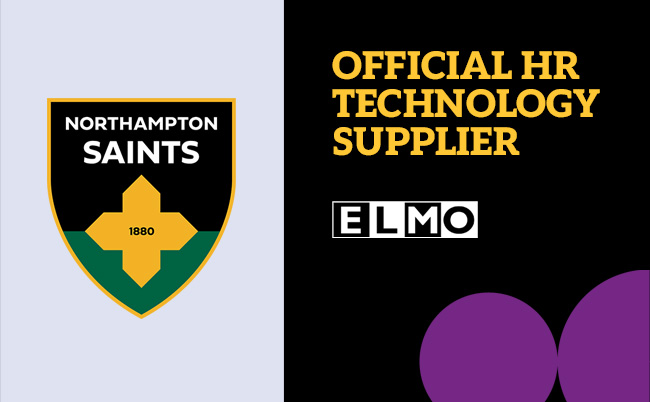Do FAST Goals Trump SMART Goals?

When you last sat down with your team to discuss their future career path, current work performance and future objectives, there’s a good chance you used the SMART goals framework. If so, you’re not alone. Businesses have been relying on this model to help define targets and priorities for decades.
But despite SMART’s long heritage, many are now asking whether it can still provide the guidance needed in today’s more challenging business environment. Instead, many are looking to alternatives like FAST.
So what’s the key difference between these two models? And what are the reasons you might choose one over the other? Here’s what you need to know.
SMART: The classic approach to goal-setting
The SMART model has a long heritage in business. The model was most likely first pioneered in a 1981 article by George Doran, though the concept of ‘management by objectives’ that it relies on goes back as far as Peter Drucker’s 1954 book ‘The Practice of Management’. Either way, it’s nothing new.
The acronym specifies that any goals agreed must be Specific, Measurable, Assignable, Realistic and Time-Related. The goal is to avoid vague and aspirational targets that don’t provide any tangible benefit to either the business or the employee.
But how does this work in practice? Let’s pretend your direct report, Jane, has just been promoted to her first manager role – and you’re working together to improve her feedback and communication skills.
An unhelpful and unmeasurable goal might be simply to ‘improve management skills’ or to ‘get better at feedback’. This isn’t useful because it’s not clear what those management or feedback skills are and what specific steps Jane needs to take to develop them. Most importantly, it’s pretty easy for you and Jane to end up with radically different views on how well she’s met the target.
Instead, SMART encourages tangible tasks and actions that can be objectively reviewed. You might therefore ask Jane to complete a course in management training over the next quarter or to provide feedback to her own reports each week. This makes it a lot easier to agree on how effectively and consistently the targets have been met.
Nonetheless, SMART has plenty of critics. Those who’ve moved away from the model say that this framework promotes individual ambition over collective goals. It can also incentivise employees to set easy targets, a phenomenon known as ‘sandbagging’. That’s why many businesses are now looking elsewhere.
Read more: Performance Management Metrics: How to Define and Measure Success
What are FAST Goals?
While SMART remains popular, it’s not the only model that businesses are using. Increasingly, many are now turning to alternatives like FAST. This model specifies that goals should be:
F – Frequently discussed: Goals are constantly reviewed and evaluated.
A – Ambitious: Targets should be difficult but not impossible to achieve.
S – Specific: Metrics and milestones should be used wherever possible to provide clarity on when, how and how often goals should be completed. Like with SMART, this reduces the risk of ambiguity.
T – Transparent: Everyone can see what your goals are and you can see what your colleagues’ goals are.
The FAST framework has gained in popularity over the last few years. Its proponents say that it is a much more effective way of setting realistic targets. Most importantly, the focus on transparency helps to build a more open and accountable culture around goal setting. Businesses also appreciate the model’s focus on constant feedback, encouraging managers and direct reports to engage in continuous and iterative discussion.
According to an article from MIT Sloan Management, (‘With Goals, FAST beats SMART’), these are the main benefits of the approach:
FAST Goals vs SMART Goals
Unlike SMART, FAST emphasises goals that are difficult but not impossible to achieve and embeds them into a culture of ongoing, transparent feedback.
But the shift towards FAST goal-setting isn’t necessarily as simple as switching acronyms. The traditional performance management framework in many organisations doesn’t help. Many organisations still default to having annual performance reviews via a fairly one-sided conversation between manager and employee. Often, feedback is delivered, not discussed. This doesn’t lend itself well to the culture of open and continuous feedback that FAST promotes.
Research shows that adopting this continuous approach to feedback can make a huge difference to employees and their productivity. In fact, as many as 80% of employees who say they’ve had meaningful feedback in the past week say they’re fully engaged in their jobs.
So is it a slam dunk for FAST over SMART? Some certainly think so. But in reality, the models aren’t that different. FAST borrows many of the elements that made SMART so popular in the first place, particularly including the focus on specificity.
And ultimately, there’s no reason why SMART goals can’t also be frequently discussed and transparent – it’s just not a requirement of the framework.
Good performance management is all about consistency
When it comes to FAST vs SMART, there’s really no right answer. If you can deliver a culture of continuous and ambitious feedback that’s specific, objective and measurable – it doesn’t really matter which framework you’re using to enable it.
The key when it comes to performance management is consistency and clarity.Neither FAST nor SMART is going to help your business if every manager applies it differently. The challenge for HR teams, therefore, is to establish a clear standard for how and when performance reviews should take place.
Luckily, technology like ELMO Performance can help. Here’s how:
- Customisable appraisal workflows.
- Notifications that prompt specific actions from managers and employees.
- Multiple levels of sign-off and workflow approvals.
- Comprehensive libraries of goals, development objectives and competencies.
- 360-degree reviews enable feedback from multiple stakeholders.
All of this makes it much easier for HR teams to ensure a consistent and high-quality approach to performance management right across the organisation.
Want to find out more? Explore ELMO Performance today.
 HR Core
HR Core 










